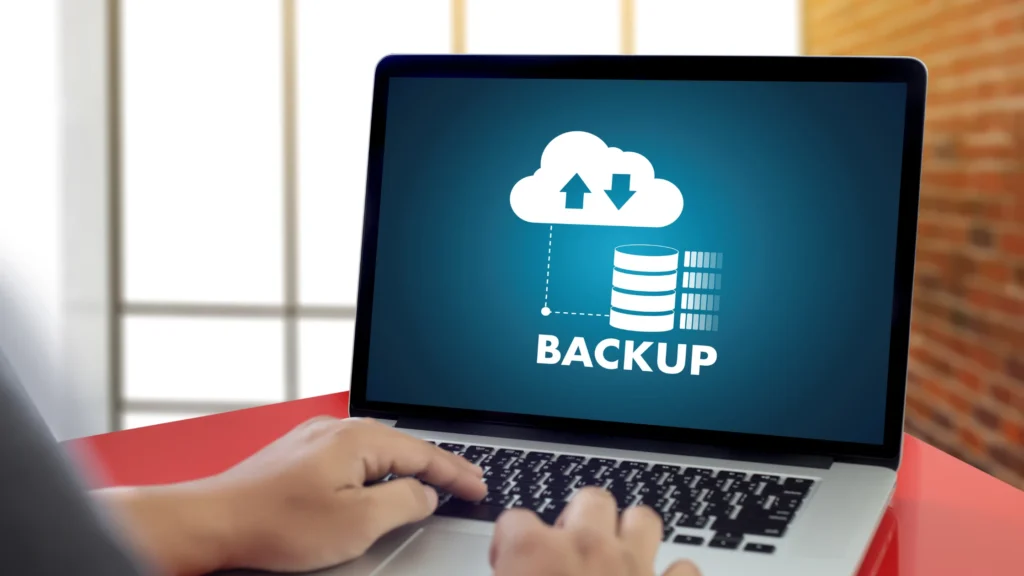You launch your game. Ten players join. The server feels fine.
A few hundred players show up a week later, and the lag begins. That’s when, as a game developer, you realize the real problem isn’t the game. It’s the server.
Players leave when your game performance drops, and once they go, most never return. Game server scaling is how you stop these players from leaving and, worse, never returning.
Game server scaling is preparing your backend to handle growth, that is, more players, more data, and more real-time requests, without slowing down or crashing.
This guide explains how to scale smoothly, from dedicated servers to cloud hosting, from load balancing to multiplayer infrastructure.
You’ll see what works when player spikes hit, what to monitor, and how to keep costs predictable as your game grows.
Let’s dive in!
Game Server Scaling Basics
Game server scaling means preparing your gaming system to handle more concurrent users (CCU) without breaking performance or budget.
Game server scaling is not just about adding servers; it’s about building smarter infrastructure that reacts dynamically to player demand.
What Game Server Scaling Really Means
Game scaling comes in two main types: horizontal scaling vs vertical scaling.
- Vertical scaling means upgrading your existing hardware, such as adding more CPU cores (8–32), more RAM allocation (16GB–64GB), or faster NVMe storage.
- Horizontal scaling means adding more game servers and connecting them through auto-scaling groups and load balancers.

Modern game setups rely on elastic infrastructure; systems that automatically provision, deploy, and scale new instances as your player count grows.
This is the foundation of any strong game server scaling strategy.
When to Start Thinking About Scaling
If you’re serving 10 players today, you might not worry. But once you hit 1,000 or 10,000 CCU, the math changes. You’ll notice rising CPU usage (80%+), latency beyond 50ms, or downtime slipping below the 99.9% uptime goal.
Small studios experiencing 150% monthly growth quickly hit bottlenecks in multiplayer game architecture, session limits, or even database performance.
So, the best time to consider scaling your gaming isn’t when you crash; it’s right before your first big spike.
Build Gaming Infrastructure That Grows with Your Player Base
Your gaming setup must evolve as your audience expands from local or shared environments to distributed cloud-based game infrastructure. That’s where game server scaling becomes a design principle, not an afterthought.
From Shared Servers to Cloud Infrastructure

As an early-stage game developer, you’ll often start with shared hosting or small dedicated servers. But those setups don’t last when growth kicks in.
Platforms like Google Cloud for Gamers, Azure PlayFab, and CloudPap Compute let you migrate, deploy, and automate scaling in minutes.
Each offers different levels of flexibility and cost:
- Shared: simple, but limited.
- Dedicated: reliable, but harder to expand.
- Cloud: dynamic and cost-effective game hosting that scales on demand.
When configured properly, your cloud hosting provider, such as CloudPap, triggers scaling events instantly when load or network throughput rises, ensuring seamless multiplayer performance across regions.
Auto-Scaling and Load Balancing in Multiplayer Games
The key to handling player spikes lies in automation. You can set scaling triggers like CPU >80%, queue length, or CCU thresholds. Once reached, your auto-scaling group deploys new instances automatically.
Then comes load balancing in gaming servers. Methods like round robin, least connections, or geo-based routing distribute traffic evenly. Combine with 1–10 Gbps bandwidth and <50ms latency targets, for a smoother player experience everywhere.
Optimize Server Performance for Thousands of Players
As you grow, it’s not enough to add servers. You must optimize them. True game server scaling connects specs, code, and monitoring into one continuous improvement loop.
CPU, RAM, and NVMe: What Matters Most?
Your CPU core count, RAM allocation, and NVMe drives directly affect server tick rate, latency, and load times.
For most multiplayer setups:
- 8–32 CPU cores handle up to 10,000 concurrent players.
- 16GB–64GB RAM ensures smooth session management and player matchmaking.
- Fast NVMe drives cut response time by 30–40%.
When you optimize these specs, you reduce packet loss and boost real-time multiplayer performance, keeping gameplay consistent even under pressure.
Monitoring and Testing Under Real Load
Never scale your game setup blindly. Tools like Datadog, Prometheus, and Grafana help monitor latency, response time, uptime, and CPU/RAM usage metrics.
Before any big launch, load testing tools like k6, Locust, or JMeter should simulate spikes, sometimes 2–3x your expected load.
Do regular benchmarking and stress testing to reveal hidden performance bottlenecks, letting you optimize your setup before players notice lag or downtime.
Cost and Efficiency Lessons from Real Gaming Scaling Journeys
More players mean more costs. Smart game server scaling ensures you pay for growth, not waste.
Manage Costs While Game Scaling Up
The trick to managing costs while scaling your game as a game developer is balancing performance with cost optimization. Most cloud hosting providers use a pay-as-you-go model, billing hourly per resource.
For multiplayer titles, costs often range from $0.02 to $0.10/player, depending on compute and bandwidth.
You can predict, budget, and control costs using:
- Reserved instances for stable traffic.
- On-demand compute for surges.
- Performance dashboards for cost-effective game hosting insights.
Comparatively, dedicated vs shared game servers trade flexibility for predictability. Bare metal is steady but slower to scale, while cloud gives you elastic game infrastructure that automates growth instantly.
Predict Resource Needs Before Player Spikes
Use analytics and uptime monitoring tools to anticipate surges. If your average weekend load is 40% higher, prepare for it with proactive auto-scaling policies.
You maintain real-time multiplayer performance and prevent costly emergency expansions by handling player spikes before they hit. Over time, your user acquisition cost (CAC) is lower since satisfied players attract others organically.
DevOps Practices for Smooth Game Server Scaling
Infrastructure isn’t everything. Your DevOps workflow decides how fast you can deploy, rollback, or update live servers.
Automate Deployment and Updates
A modern CI/CD pipeline lets you deploy updates without downtime. Paired with Kubernetes and Docker, you can automate patches, maintain uptime, and even rollback failed builds safely.
This kind of automation turns your scaling system into a living process where multiplayer game servers stay consistent, patched, and secure across updates.
Use Containers to Simplify Scaling
Containerization breaks your backend into smaller services using Docker and Kubernetes. Each microservice handles one function: player matchmaking, session management, or database syncing.
Benefits of containerization include:
- Isolation for stability.
- Defined resource limits to prevent overload.
- Instant instance duplication for new players.
By separating services, containerized deployments ensure faster recovery and reduced downtime, no matter how fast your multiplayer game architecture grows.
Player Experience and Performance Stability
Behind every scaling decision is one simple truth: if players lag, they leave. That’s why game server scaling directly impacts satisfaction, engagement, and player retention.
Reduce Lag and Downtime for Players
Use edge computing and CDN (Content Delivery Network) caching to distribute assets closer to players. These reduce network latency to <50ms and help maintain 99.9% uptime.
Combine that with low-latency game servers using UDP or WebSockets for faster sync. When you cache, balance, and sync your real-time player data, the result is a smoother, global experience: A true player experience optimization.
Retention Depends on Reliability
Players notice when servers crash. A 20% improvement in uptime often means 20% higher retention, as proven by metrics like session length, return rate, and match completion.
In a reliable game server architecture, even one second of downtime can ripple through multiplayer sessions, raising downtime percentage and lowering trust. Stability isn’t just technical; it’s emotional for your players.
Final Thoughts: Growing Smart with Scalable Game Servers
At its core, game server scaling is about readiness, not reaction.
When your player count jumps overnight, you need servers that grow as fast as your community. CloudPap Compute gives you dedicated, high-performance instances built for real-time scaling, without hidden costs.
With elastic game infrastructure, instant auto-scaling, and transparent billing, you can deploy faster, monitor smarter, and scale seamlessly as your game grows from 10 to 10,000 players.
Start today. Build a cost-effective game hosting setup ready for your next player surge.
Game Server Scaling for Game Devs FAQs
Q1. What is game server scaling?
Game server scaling is increasing or decreasing game servers and resources based on player demand. It ensures stable performance, low latency, and uptime as concurrent users (CCU) grow from 10 to 10,000 players or more.
Q2. How do I know when to scale my game servers?
You should know when to scale when CPU usage exceeds 80%, latency passes 50ms, or uptime drops below 99.9%. Monitor player spikes and use auto-scaling policies to help maintain consistent gameplay during peak load times.
Q3. What’s the difference between horizontal and vertical scaling?
The difference between horizontal and vertical scaling is that horizontal scaling adds more game server instances through load balancers. Conversely, vertical scaling upgrades existing machines with more CPU cores, RAM, or faster NVMe storage. Most modern studios use both for flexibility and cost efficiency.
Q4. How can I reduce lag in multiplayer games?
To minimize latency, use edge computing, CDN caching, and UDP-based networking to reduce lag in multiplayer games. Locate servers near major player clusters to cut delay to under 50ms, improving real-time multiplayer performance and player satisfaction.
Q5. What tools help with game server scaling and monitoring?
Tools that help with game server scaling and monitoring include Datadog, Prometheus, and Grafana. These tools track performance metrics such as response time, uptime, and packet loss. For load testing, use K6, Locust, or JMeter to simulate real player load before scaling.
Q6. How much does scaling game servers cost?
The cost to scale game servers varies by provider and player volume. Using a pay-as-you-go model, expect around $0.02–$0.10 per active player. Optimize further with reserved instances, performance tuning, and cost-effective game hosting strategies.
Q7. Which cloud hosting providers support game server scaling?
The cloud hosting providers that support game server scaling include AWS GameLift, Google Cloud Game Servers, Azure PlayFab, and CloudPap Compute. Each supports auto-scaling for online games, load balancing, and elastic infrastructure for global deployment.
Q8. How can containers help scale multiplayer servers?
Containerization with Docker and Kubernetes isolates each service, matchmaking, session management, and databases, for faster instance duplication and recovery. It simplifies scaling and reduces downtime during live updates.
Q9. What’s the best way to handle sudden player spikes?
The best way to handle sudden player spikes is to use predictive analytics, auto-scaling groups, and load balancing to expand capacity instantly. Test with load simulation tools to ensure your system can handle 150% player growth without crashing or lag.
Q10. Why is uptime so important for player retention?
Players expect stability. Games with 99.9% uptime see up to 20% higher retention rates. Reliable server architecture builds trust, improves session completion, and supports long-term community growth.

